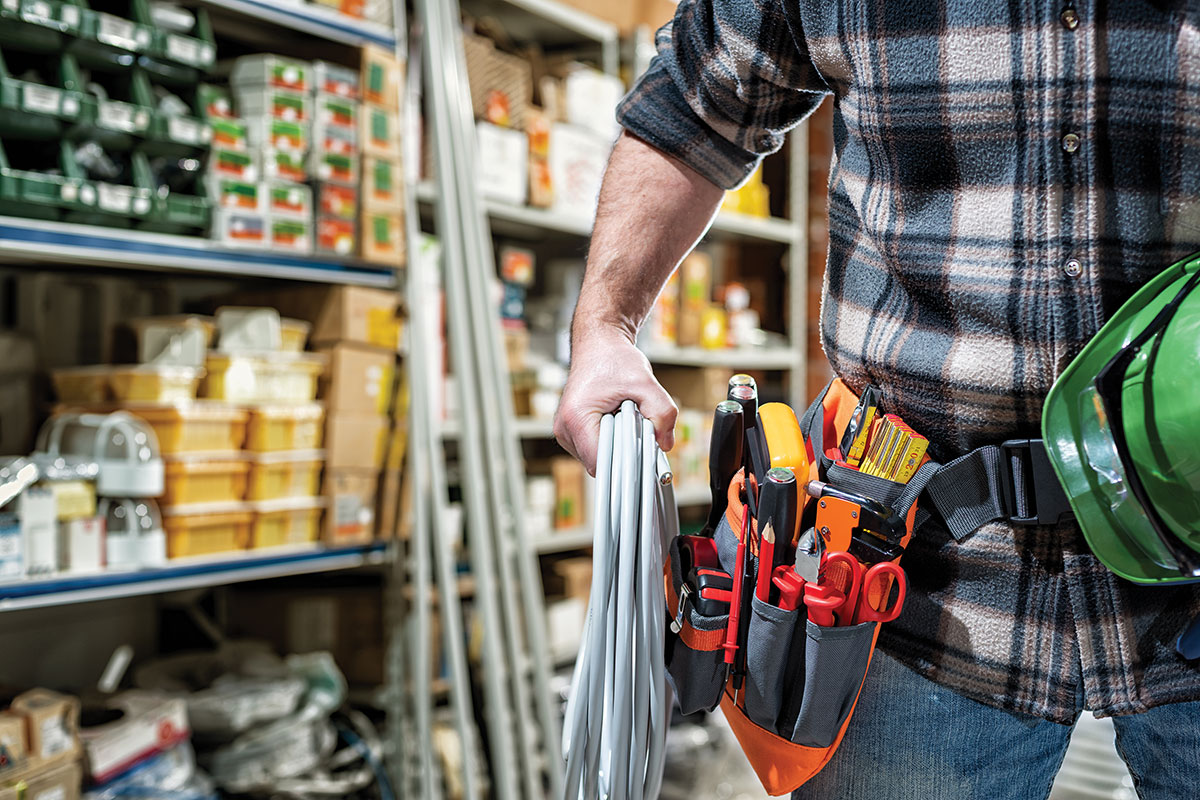IEC/UL/CSA 62841 is the international standard series that addresses the safety of electric, motor-operated, or magnetically driven tools.
By Hugo Lozano, Regional Chief Engineer, Intertek Electrical & Wireless
From electricians and woodworkers to landscapers and DIYers, power tools are used every day by a wide range of individuals and professionals across various industries. Like other electrical products, power tools must comply with certain standards to ensure they are safe to use.
IEC/UL/CSA 62841 is the international standard series that addresses the safety of electric, motor-operated, or magnetically driven tools with provisions for hand-held tools, transportable tools, and lawn and garden machinery. These standards serve as a vital framework for ensuring the safety, performance, and quality of electrical equipment used in various applications, including domestic, commercial, and industrial settings. They encompass a wide range of requirements and specifications tailored to specific types of electrical equipment, addressing aspects such as design, construction, testing, and labeling. For electrical inspectors, adherence to the IEC/UL/CSA 62841 standards is of paramount importance as it provides a reliable benchmark for evaluating the safety and compliance of electrical installations and equipment. By referencing these standards, inspectors can effectively assess the integrity of electrical systems, mitigate potential risks, and uphold regulatory requirements.
IEC/UL/CSA 62841 Overview
The IEC 62841 standard series outlines comprehensive testing procedures to evaluate hand-held tools, transportable tools, and lawn and garden machinery for safety and performance. Some key aspects of the testing include:
- Electrical Safety: Ensuring that power tools are properly insulated, grounded, and protected against electrical shocks, reducing the risk of accidents.
- Mechanical Strength: Evaluating the structural integrity and durability of the tools to withstand expected usage conditions without failure.
- Temperature and Fire Resistance: Verifying that power tools can withstand elevated temperatures and do not pose a fire hazard during operation.
- Ergonomics and Vibration: Assessing the design and vibration levels of the tools to prevent user fatigue and discomfort during prolonged use.
- Noise Level: Measuring the noise emitted by the tools to ensure they comply with acceptable noise limits for user safety.
- Protection Against Particulate Ingress: Testing the tool’s enclosure to prevent the entry of dust and debris, safeguarding internal components.
- Battery/Battery Pack Hazards: Testing and evaluation of new requirements for lithium-ion (Li-ion) cells and battery systems.
- Functional Safety: Safety evaluation alternative for electric circuits that provide a safety critical function (SCF).
- Safety Labels and Instructions: Ensuring the presence of clear and comprehensive safety labels, warnings, and user instructions for proper tool usage.
Electrical Hazards
IEC/UL/CSA 62841 addresses various hazards associated with electrical equipment. It is designed to mitigate risks and ensure the safety of users, property, and the environment by establishing requirements and guidelines for the design, construction, installation, and use of electrical equipment. Some of the hazards addressed by these standards include:
- Electric Shock: Standards in the IEC/UL/CSA 62841 series include requirements to prevent electric shock hazards by specifying insulation requirements, grounding arrangements, and protective measures to minimize the risk of contact with live parts.
- Fire Hazards: The standards include provisions to mitigate fire hazards by addressing issues such as overheating, short circuits, and insulation breakdown, as well as requirements for fire-resistant materials and protection against ignition sources.
- Mechanical Hazards: Standards in the series may include requirements for mechanical safety, such as protection against moving parts, sharp edges, and crushing hazards to prevent injuries during equipment operation and maintenance.
- Environmental Hazards: Electrical equipment may pose environmental hazards such as pollution, contamination, or ecological damage. Standards may include requirements for environmentally friendly design, energy efficiency, and disposal/recycling considerations to minimize these risks.
- Radiation Hazards: Certain types of electrical equipment, such as devices using electromagnetic radiation or devices that can emit laser or optical radiation, may pose a hazard if not properly mitigated. Standards may include requirements for photobiological hazards, laser exposure, shielding, emission limits, and safety precautions to protect users and the environment from harmful radiation exposure.
Battery System Hazards
Since more and more products in this category are transitioning to battery power, the IEC 62841 standard series also addresses hazards associated with battery systems, including:
- Risk of Fire or Explosion: Safely test and verify both conditions in a state of the testing bunker (CRT).
- Supplemental Requirements of IEC 62133: Evaluation/testing of power tools as they are submitted to different use patterns such as rough use, high charging, and discharging currents.
- Temperature and Fire Resistance: Verifying that battery systems can withstand elevated temperatures and do not pose a fire hazard during normal/abnormal operation.
- Abnormal Operation: Safe functioning of battery-operated appliances during single fault conditions, including battery short circuit.
- Lithium-Ion Battery Systems: Implementation of requirements for the safe functioning of battery and charging system.
Overall, the IEC 62841 standard series serves as an essential reference for electrical inspectors, helping them uphold safety standards, ensure regulatory compliance, mitigate risks, and maintain the quality and reliability of electrical installations and equipment.











Find Us on Socials